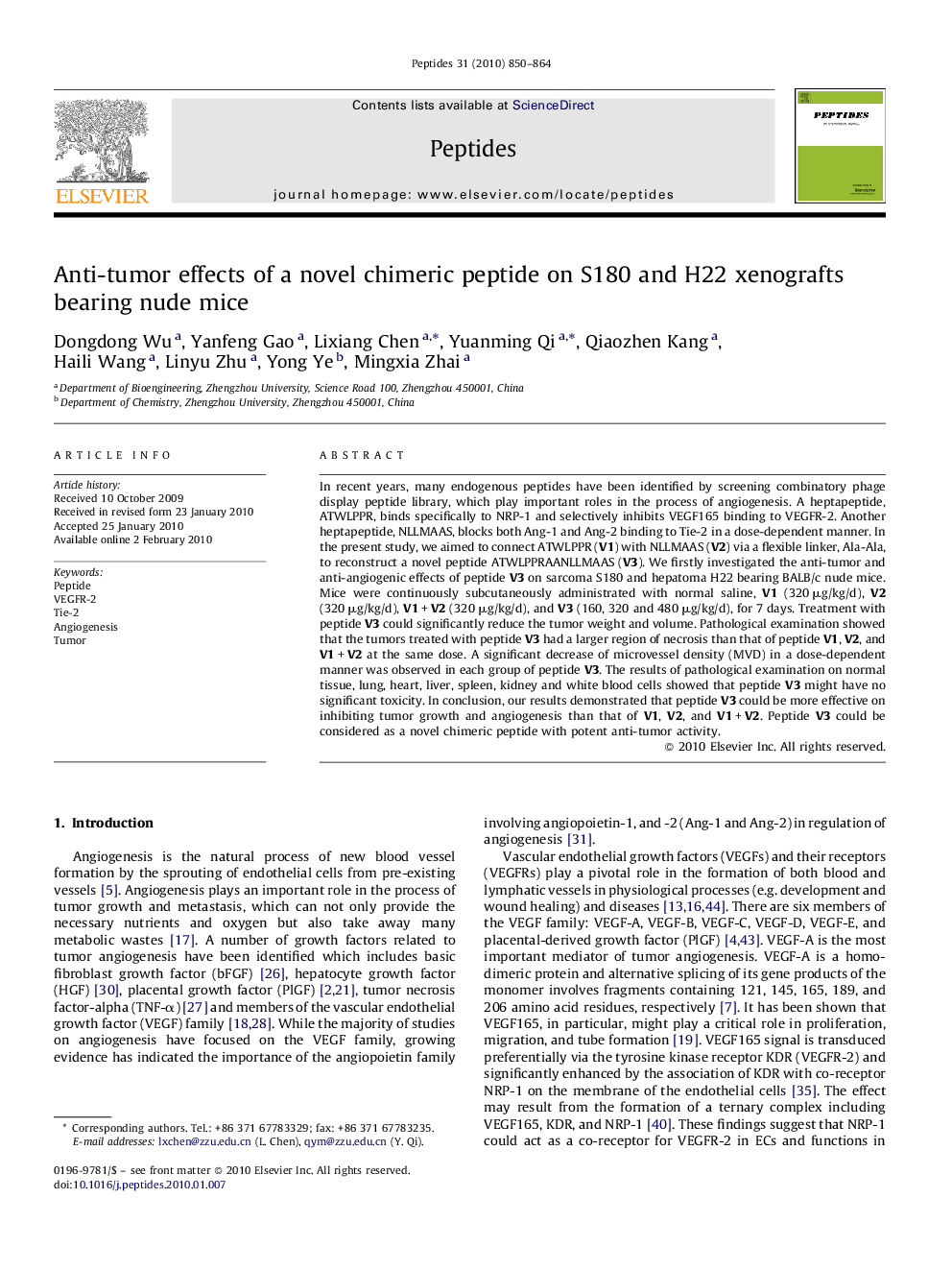| Article ID | Journal | Published Year | Pages | File Type |
|---|---|---|---|---|
| 2006750 | Peptides | 2010 | 15 Pages |
Abstract
In recent years, many endogenous peptides have been identified by screening combinatory phage display peptide library, which play important roles in the process of angiogenesis. A heptapeptide, ATWLPPR, binds specifically to NRP-1 and selectively inhibits VEGF165 binding to VEGFR-2. Another heptapeptide, NLLMAAS, blocks both Ang-1 and Ang-2 binding to Tie-2 in a dose-dependent manner. In the present study, we aimed to connect ATWLPPR (V1) with NLLMAAS (V2) via a flexible linker, Ala-Ala, to reconstruct a novel peptide ATWLPPRAANLLMAAS (V3). We firstly investigated the anti-tumor and anti-angiogenic effects of peptide V3 on sarcoma S180 and hepatoma H22 bearing BALB/c nude mice. Mice were continuously subcutaneously administrated with normal saline, V1 (320 μg/kg/d), V2 (320 μg/kg/d), V1 + V2 (320 μg/kg/d), and V3 (160, 320 and 480 μg/kg/d), for 7 days. Treatment with peptide V3 could significantly reduce the tumor weight and volume. Pathological examination showed that the tumors treated with peptide V3 had a larger region of necrosis than that of peptide V1, V2, and V1 + V2 at the same dose. A significant decrease of microvessel density (MVD) in a dose-dependent manner was observed in each group of peptide V3. The results of pathological examination on normal tissue, lung, heart, liver, spleen, kidney and white blood cells showed that peptide V3 might have no significant toxicity. In conclusion, our results demonstrated that peptide V3 could be more effective on inhibiting tumor growth and angiogenesis than that of V1, V2, and V1 + V2. Peptide V3 could be considered as a novel chimeric peptide with potent anti-tumor activity.
Keywords
Related Topics
Life Sciences
Biochemistry, Genetics and Molecular Biology
Biochemistry
Authors
Dongdong Wu, Yanfeng Gao, Lixiang Chen, Yuanming Qi, Qiaozhen Kang, Haili Wang, Linyu Zhu, Yong Ye, Mingxia Zhai,
